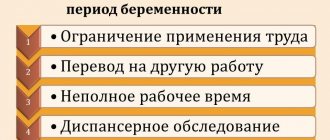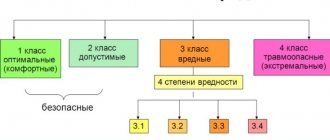What is a watch and where is it used?
The shift method of work according to the Labor Code is regulated by Chapter 47. In general, the Labor Code of the Russian Federation understands the shift method (the shift itself) as the sum of the time of work and the rest interval between shifts.
Work on a rotational basis () is limited in duration to a period of a month. Exceptions are special cases at individual sites, due to which the specified period may be extended to 3 months (for this, the opinion of the workers’ trade union body, if there is one, must be taken into account). In its absence, they act within the framework of Art. 74 TK
The shift method of the Labor Code of the Russian Federation provides a guarantee of providing workers with housing when they are at the work site (Article 297).
The designated type of activity is used in oil and gas and coal mining, development of precious metals, fishing, logging, as well as in the field of transport, construction, geology and others.
Who can work a shift
Work on a rotational basis according to the Labor Code of the Russian Federation (based on Article 298) is available to the following persons:
- adults;
- non-pregnant and without children under three years of age (female criterion);
- for fathers or guardians of children under three years of age, if they are not raising them alone;
- without medical contraindications, according to the conclusion issued in the manner prescribed in Order of the Ministry of Health and Social Development of Russia dated May 2, 2012 No. 441n.
https://youtu.be/UWloTcx0NP4
Compensation for difficult working conditions
In addition to the bonus, employees have the right to a regional coefficient and special percentage bonuses if they are sent for rotational work in the Far North or equivalent territories. It should be noted that the regional coefficient and special percentage bonuses are not charged on the bonus in connection with the rotational form of labor relations, since the bonus itself is a compensation payment, and not part of the salary on which these bonuses and the coefficient are calculated.
What is a watch for?
The Labor Code reserves the shift method of work for cases where the place of work or the employer is located at a significant distance from the permanent residence of employees and it is necessary to carry out production processes or activities listed above. The shift is also suitable for cases when it is necessary to quickly build, re-arrange or repair objects with social, production or other tasks in areas that are remote, uninhabited or in conditions of a specific nature.
Types of watches
There are different types of watches - intraregional and expeditionary, or between regions. If the intraregional type assumes a not too long period of activity - 2 weeks and the facility itself is not too far from the employee’s place of residence, then the second type is longer. The expeditionary or interregional option not only lasts longer than a regular shift, but the facility is also located further away. A research expedition can also be considered a rotational work method.
What is the difference between a shift and a business trip?
This should not be confused with a business trip. There is some difference:
- A business trip is a trip to carry out some assignment from management. The shift is a full 12 hour shift.
- Payment. On a business trip, a standard working day, plus some allowances. During employment, a separate legal contract is concluded, which stipulates the terms of remuneration, composition, volume of labor and period of employment.
- A medical examination is not required when traveling on a business trip, whereas for long-term shift work, a medical record is required (contraindications must be noted).
- On a business trip there are no restrictions on the length of stay, neither minimum nor maximum. On shift, the duration of service is no more than one month (in some cases up to three months).
How to introduce a shift at an enterprise
The rotation method, namely the system of its application, is introduced by the employer. Before making an appropriate decision, a draft local regulatory act plus justifications for it are submitted to the elected body of the primary trade union organization that defends the interests of workers (all or the majority).
This body, a maximum of five working days after receiving the project, sends the employer its written reasoned opinion on it. When it is negative or includes proposals to improve the project, the employer has two options:
- Agree with this opinion.
- It is mandatory to reach a consensus through additional consultations (within three days) after receiving an opinion.
The employer can approve the appropriate act without the consent of the elected body. Contradictions are reflected in the protocol, after which the act becomes valid. The elected body of workers may appeal against an act introduced in this way in the relevant state labor inspectorate or in a court of general jurisdiction. The said body has the right to initiate a collective labor dispute in accordance with Chapter 61 of the Labor Code. But that's if it exists. If there is no trade union, the employer introduces new working conditions in compliance with the procedure prescribed in Art. 74 Labor Code of the Russian Federation.
Transferring already working frames to this mode occurs through the following sequence of steps:
- Written notice of transfer to rotational work with a note of consent to such work (two months before the transfer). If someone does not agree to the transfer, they are offered any vacancy. In the absence of such or the person’s refusal of the proposals, the employment contract is terminated.
- Changing the employment contract through the approval of an additional agreement.
- Registration of a transfer order.
Sample order to start a shift
Work and rest schedule during shift work
The shift work schedule of the Labor Code of the Russian Federation is stipulated in Art. 301, as well as in section 4 of the Resolution of the State Committee for Labor of the USSR, the Secretariat of the All-Union Central Council of Trade Unions, the Ministry of Health of the USSR dated December 31, 1987 No. 794/33-82.
The shift method according to the Labor Code of the Russian Federation is implemented with summarized accounting (Article 104 of the Labor Code) of working time for a month, a quarter, a longer period, or a maximum of a year.
The working shift schedule fixes the duration of work and rest for the accounting period (applies to all working time, as well as travel time from the assembly point or place where the employer is located to the place of work). This schedule is entered by the employer in the same mode as the shift itself. Employees are notified of this innovation at least two months before it takes effect.
The schedule takes into account the time required to transport workers to and from their shifts. But the days of travel to and from work may affect inter-shift rest, since they are excluded from labor time.
Scheduled overtime hours, when they are not a multiple of a full workday, can be accumulated and combined into full working days, which entails the provision of additional days of inter-shift rest.
The maximum duration of a daily work shift is 12 hours. Workers' rest between shifts, including lunch breaks, can also last half a day. The time of daily (between shifts) rest, which is underused in this case, and the days of weekly rest are summed up and provided as additional days off from work (inter-shift rest time) in the accounting period. Weekly rest, which can affect any days of the week according to the number of days in the current month, must be minimally equal to the number of full weeks of this month.
Sample shift work schedule
Legal regulation
Before applying for a job in a company on a rotational basis, it would be a good idea to familiarize yourself with the Labor Code of the Russian Federation; such activities are regulated by a specific article of the Law. According to Article 297 of the Labor Code of the Russian Federation, a shift is a type of legal labor activity when the daily return of a worker to his place of registration is impossible. This type of employment is not a business trip; all working time spent at production (shift) and rest between shifts are considered a shift. Registration is carried out according to the employment contract.
Working hours should not exceed one month in duration, although the employer can increase the period of service to three months, having previously justified its decision with an order indicating the reasons for the increase in shifts and facilities. The length of the working day by law should not exceed 12 hours. Anything in excess can be considered processing and is paid additionally (Part 1 of Article 299 of the Labor Code of the Russian Federation). The schedule is established by the employer.
On shift, labor time is constant, without days off, the working day is 12 hours, then taking these hours into account, overtime occurs and unused weekends remain, of which there must be at least 4 per month. These overtime hours are compensated by payment at the daily rate, or days off. Time off or vacation, in this case, is carried out outside the rotational facility at the place of residence (Part 3 of Article 301 of the Labor Code of the Russian Federation).
Often the shift is located at a considerable distance from the employee’s place of residence and you need to somehow get to the point. From the collection point, which is designated by the hiring company, to the office, the cost of travel is paid by the employer, while the days spent on travel are considered working days and are paid at the daily rate (Part 8 of Article 302 of the Labor Code of the Russian Federation). But the employee will have to get to the collection point on his own; according to the law, the employer does not pay for this period of travel, unless otherwise provided by internal orders and agreements of the shift site.
- What laxatives are most effective for constipation?
- Which smart watch is better to choose: smart watch models
- Favorable days for cutting hair - oracle
What is a shift according to the Labor Code of the Russian Federation
The rotation method is a special form of carrying out the labor process “away from home”, the basis of which is the impossibility of ensuring the daily return of workers to their place of permanent residence (Part 1 of Article 297 of the Labor Code of the Russian Federation). It is understood that the employer guarantees the provision of all living conditions, ensures vital functions, and organizes delivery from the collection point to the destination.
Order of the enterprise on the organization of rotational work
Before making a decision to introduce a rotational method of labor organization, the enterprise carries out a technical, economic, economic calculation, on the basis of which the feasibility and effectiveness of the transition to a new type of work activity is determined. The administration or manager issues an order that the enterprise transfers or introduces rotational work. Approval of the order includes:
- the fact of change, transfer and their implementation at the enterprise;
- summarized time tracking;
- for what period is the summarized working time taken into account;
- terms of remuneration, specifically:
- private enterprises set their own level of premium for shifts; in government agencies this allowance is regulated by law;
- district coefficient;
- allowance and bonus percentage “northern”;
- duration of the shift, number of days of work and days of rest;
- sometimes a list of employees who are prohibited from being involved in this type of activity is displayed;
- a note on the minutes of the trade union meeting (why is a trade union protocol needed in this case? A trade union is a means of regulating and agreeing on all the terms of an agreement with employees so that all procedural and legislative acts are observed);
- It is obligatory to note that employees are familiar with the contents of the order.
How is such work paid?
Payment for work on a rotational basis is noted in Art. 302. Any calendar day of being at work during the rotation period, as well as the actual days of travel from the place where the employer is located (collection point) to the place where work tasks are performed and back, is paid with an allowance that replaces the daily allowance. Its amount and payment procedure depend on what kind of organization the employer is. If this is a federal public sector employee, then the corresponding parameters of the allowance are determined by Decree of the Government of the Russian Federation dated 02/03/2005 No. 51 or similar standards of a specific subject of the Russian Federation, a municipality, if this is a public sector employee of the appropriate level.
For other companies, the bonus is specified in labor, collective agreements or local regulations.
For each travel day to and from the workplace, for days of travel delay due to weather or due to the fault of the carrier, the employee receives a daily rate. He receives it for any overworked day of rest according to the schedule (day of inter-shift rest). Labor, collective agreements, local regulations may determine higher pay.
Shift workers from other regions who work in the Far North and similar areas are given a regional coefficient and are paid percentage bonuses to their salaries in the manner and amount that are provided for persons who continuously work in such places.
Inter-shift rest
The shift method of work involves overtime, in comparison with the legally established norms of work and rest time. Days of rest between shifts are provided to cover this gap and compensate the employee for the costs of his labor. This period is paid based on one tariff rate (daily wage based on salary). Higher calculated indicators enshrined in the local regulations of the organization are also acceptable. The tariff rate is multiplied by the number of days of rest.
Attention! To calculate the number of days of rest between shifts, the actual number of hours worked according to the schedule should be compared with the standard according to the production calendar of a 40-hour working week (if there are harmful working conditions - a 36-hour working week). The positive difference is divided by the standard length of the working day of the corresponding working week - 8 or 7 hours. 12 min.
Travel days are calculated by the employer based on the number of travel days and the daily tariff rate, multiplying the two values.
Work on a rotational basis - registration according to the Labor Code of the Russian Federation
Shift workers are registered for work through a corresponding employment contract, which structurally displays the following information:
- Employee and employer data.
- General provisions.
- Terms of payment.
- Temporary mode of work and rest.
- Working conditions plus guarantees and compensation.
- Compulsory insurance (social, pension, medical).
- Rights and obligations of the employee and employer.
- Their responsibility.
- Training in safe working methods.
- Final provisions.
- Details and signatures of the employee and employer.











